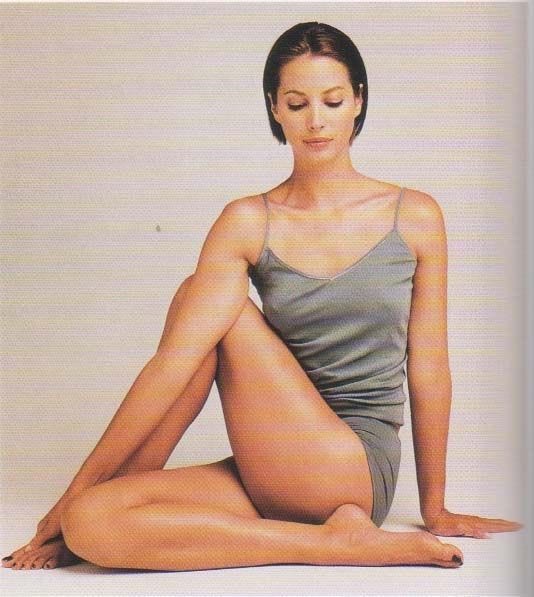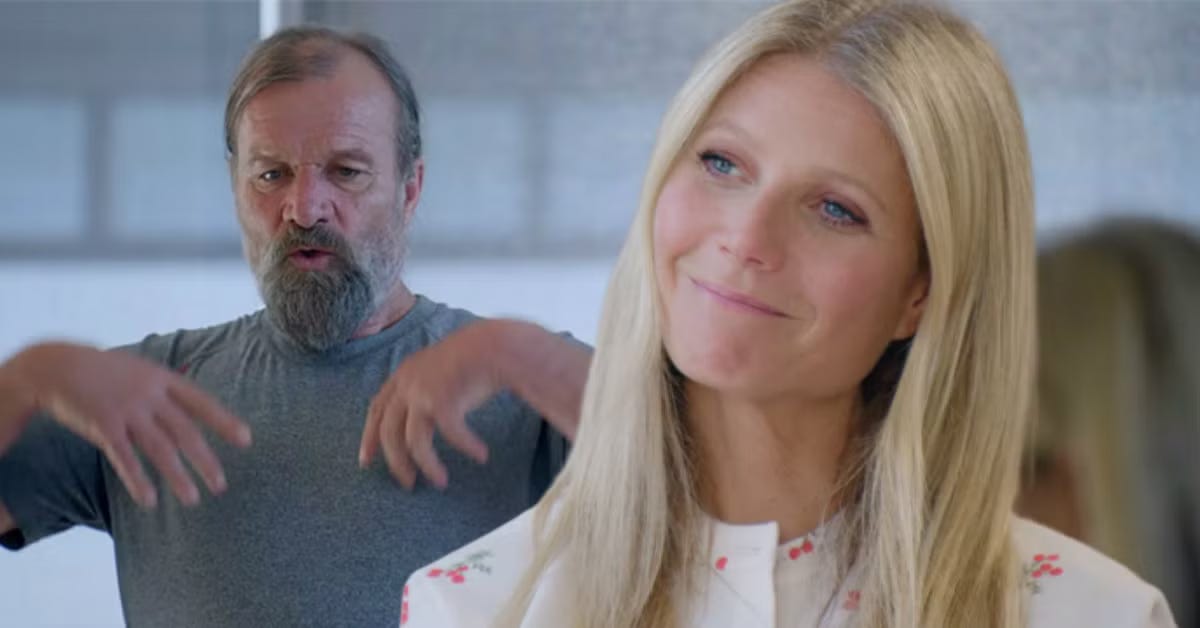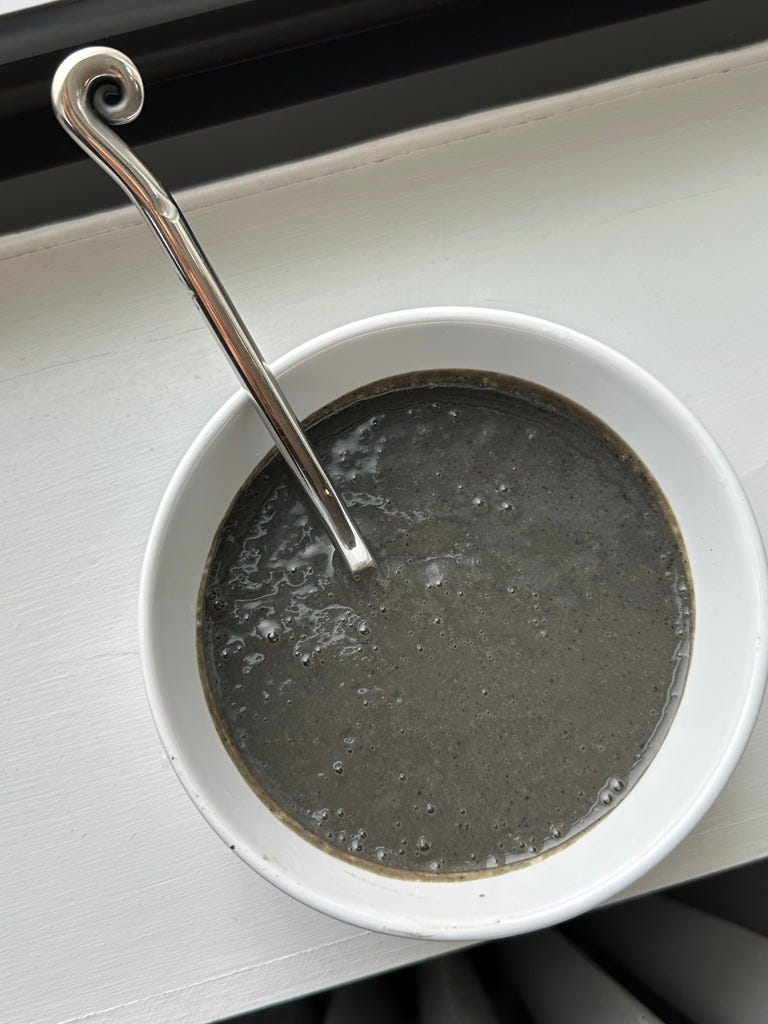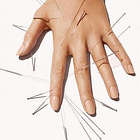You know how people say that what you resist is actually what you need most (or something like that)? That’s exactly my relationship to breathwork. As someone who’s allergic to slowing down, the idea of making the most subconscious of human behaviors a full-blown activity is deeply unattractive to me.
Come to think of it, it’s pretty remarkable that I’ve been able to avoid engaging with topic for this long. Maybe it’s because the term ‘breathwork’ itself is incredibly unspecific, or maybe I just shut down mentally when someone brings it up. Either way, I’ve skated on by as a wellness writer for far too long without having to properly consider it. And yet, here we are.
I’m not sure what came over me*, but I decided it’s about time I grow up and do the hard-but-good-for-you-thing. The least sexy, least expensive wellness practices tend to be the most transformative—like eating vegetables and writing in a journal—and today, I’m finally opening myself up to the possibility of potentially trying out breathwork. I guess you could say that the only thing stronger than my need for constant stimulation is my sense of journalistic duty.
The spoonful of sugar who will help this medicine go down a lot easier is today’s expert, Alden Price, who’s so graciously offered to answer a TON of questions. She had no idea about my skeptical (at best) preconceived notions towards the topic, but she’s managed to convert me from highly resistant to excited to try.
*What came over me is my Oura ring telling me that I have an average of six hours of stress per day which utterly disturbed me.
Today we are joined by Alden Price, a New York City–based breathwork facilitator, yoga teacher, and traditional Chinese medicine practitioner. She studied breathwork under world-renowned healer and teacher David Elliott, as well as Krissy Jones, founder of Sky Ting Yoga. She guides both individuals and groups in practices that clear stored energy, restore balance, and open pathways for healing and higher potential. She currently leads 1:1 sessions and teaches group classes at Sky Ting Yoga in NoHo. Alden has come highly recommended to me by friends of the newsletter and fellow Sky Ting fanatics, so trust that we are in the best of hands today.
I like starting these off with the most painfully basic question as possible, so here goes: what is breathwork?
This is not a basic question at all! The phrase ‘breathwork’ can be quite ambiguous and mean a lot of different things to different people.
Breathing is one of the few bodily functions that happens unconsciously, without any effort or awareness, yet also has the unique capacity to be intentionally influenced and controlled. In the yogic tradition, the word prāṇāyāma comes from the sanskrit root:
prāṇa = life force, vital energy (carried in the breath)
āyāma = extension, expansion, regulation, or control
So pranayama can mean both the unrestriction of the flow of life force, breath, or the conscious regulation of such. In the yoga canon, there are countless techniques to work with the breath. Some techniques are down-regulating and calming for the mind and nervous system, while others are quite stimulating and build heat within the body.
Traditionally, breathwork was done to prepare practitioners for deeper states of meditation. I find value in all of the above and practice a combination of techniques to achieve different states: some to help clear my mind and help me focus, others to calm anxiety, another to access a deep state of healing and clearing.
Simply put, for me, breath work is the conscious manipulation of the breath in order to help integrate the mental, physical and spiritual aspects of my being.
How does one become certified to instruct(?) it?
I can’t speak to every certification path, but I can share what mine has looked like. My first yoga teacher training gave me a strong foundation in breathwork; not only in learning the techniques, but also practicing them consistently and beginning to guide others. From there, I followed the modalities I felt most drawn to. I completed my 200-hour training with Sky Ting in New York, then went on to do countless mentorships: 50 hours with Alex Sharry (an incredible Katonah yoga teacher), six months of mentorship with Krissy Jones (founder of Sky Ting Yoga), a 300-hour training in Portugal with Anton Brandt and Tony Lupinacci of The Sacred Fig, David Elliott’s healer training, among others.
In my experience, breathwork is a practice you have to experience and embody in order to effectively guide people. Studying and learning technical mechanics is one thing, but the magic happens when you have your own felt experience. I need to continuously look within, process my own experiences, memories, and face challenges. What you resist persists. You have to feel to heal. These are some cheesy slogans I like to say in class. I find clarity through the practice. I build trust in my teaching as I witness powerful changes in myself and others.
I know this is a bit idealistic, but one indication is the ability to wake up without an alarm. This shows that you are getting sufficient sleep and your body wakes up naturally. Another indication is that you wake up feeling well-rested even when needing to use an alarm. Well-slept individuals also tend to have better cognitive functioning and may experience more stable moods.
I’ve heard people talk about breathwork for a number of different outcomes. What are the different types of breathwork?
All types of breathwork help focus the mind and strengthen the mind–body connection, allowing you to feel more grounded, embodied, and aware. Practicing healthy breathing habits and knowing when to use different techniques helps support longevity, resilience, and a more balanced, fulfilling life.
Down-regulating breathwork techniques help activate the parasympathetic nervous system, the body’s ‘rest and digest’ mode, and are powerful tools for managing stress. These practices calm both the mind and the nervous system when we’re feeling anxious, overstimulated, or caught in cycles of rumination.
Up-regulating breathwork techniques are designed to energize the body and mind. They often use faster or more forceful breathing patterns, like Kapalabhati or Wim Hof breathing. These practices activate the sympathetic nervous system, building heat, increasing focus, alertness, and vitality. After the stimulation, many people also feel a rebound of deep calm and relaxation.
Neutralizing breathwork brings balance to the body and mind. It uses even, steady rhythms to stabilize the nervous system, creating a calm but aware state. Practices like Box Breathing help with focus and grounding, while Nadi Shodhana (alternate nostril breathing) balances the brain and energy channels. These techniques are especially useful for finding emotional equilibrium in daily life.
A “kriyā,” is a sequence of breath, posture, movement, and sound designed to move energy and awaken higher states of consciousness.
Every experience we go through leaves an energetic imprint on the body. The breath can serve as a metaphorical broom to sweep up and clear some of those imprints and support the processing of trauma. It opens access to deep states of consciousness, which in turn helps release and integrate emotional experiences. Breathwork and yoga can help integrate the layers of our physical, emotional and spiritual body, so we feel more whole connected to a truer version of ourselves.
Can you give us some of your favorite breathwork patterns with their intended benefits?
I love so many different types of breathwork but I’ll give my top three below!
Kapalabhati (Skull-Shining Breath)
A traditional yogic cleansing breath (kriyā), considered both a pranayama and a purification practice. It energizes the body, clears the mind, and warms the system.
How to practice:
Sit upright with a long spine. Raise your arms above your head to a v-like position. Make your palms into little cups so you can catch any grace that reigns down from above :)
Take a passive inhale through the nose.
Exhale forcefully through the nose by snapping the belly inward; the inhale happens automatically.
Continue with quick, rhythmic exhalations (start with 20–30 per round).
Rest and breathe normally between rounds.
Box Breathing
A simple, calming breath regulation technique widely used in mindfulness, yoga, and even performance training. Balances the nervous system and improves focus. This really helps me manage anxiety, a rapid heart rate or high stress situations.
How to practice:
Inhale gently through the nose for a count of 4.
Hold the breath in for a count of 4.
Exhale smoothly through the nose (or mouth) for a count of 4.
Hold the breath out for a count of 4.
Repeat the cycle for 4–10 rounds, adjusting the count length as comfortable (for example, 4–4–4–4 or 5–5–5–5).
The more ease you can find in lengthening your inhales and exhales, the higher your tolerance for carbon dioxide becomes, which means your body can use oxygen more efficiently. When we use oxygen more efficiently, the body learns to do more with less. That means steadier energy, less fatigue, and a calmer mind.
“Breathwork” as I teach it (also known as holotropic breathing, transformational breath, rebirthing)
This is the style of breathwork I guide in 1x1 sessions and with groups at places like Sky Ting or Live the Process. It’s a three-part breathing technique done lying down, set to music, designed to open energy flow, clear stagnant energy and stuck emotions. It emphasizes connecting to the heart and activating the chakras. It’s definitely more esoteric than the above practices, but I’ve found it to be profound in helping me move out of my mind and intellectual thinking self and into my emotional body so I can move through past trauma, old stories and ways of thinking, stagnant energy and stress that my body might be unconsciously holding onto, and make more space for new channels, new ideas, creativity, love and connection.
Breath pattern: Breathe in two parts through the mouth:
First inhale into the belly (low, deep breath).
Without pause, inhale into the chest (upper lungs).
Exhale passively through the mouth.
So the rhythm is: belly inhale → chest inhale → exhale.
I’d recommend if it’s your first time doing this style of breathwork you come to a guided group class!
Patterns aside, do you have any tips for… literally breathing… better?
Breath through your nose. Sleep with mouth tape. Check in with yourself throughout the day. Are you breathing? Are you breathing short and shallow quick breaths into the chest? Slow down. Breathe deeply into your low belly. Place your hands gently on the sides of your ribs and feel your ribcage expand with each inhale. As you exhale, notice your belly lowering and your diaphragm softly contracting.
Take some time, even just five minutes, in the morning and/or at night to practice breathwork. In the morning maybe that’s Kapalabahti, to help energize and focus your mind for the day. At night maybe that’s box breathing, to help settle and calm the mind for sleep. Randomly throughout the day, I will sometimes practice making my exhales longer than my inhales. For example, breathing in for 4 counts and exhaling for 6. This technique helps shift the nervous system into a parasympathetic, rest-and-digest state. Since I tend to run anxious and find inhaling easier than slowing down my exhales, this practice has been especially grounding for me.
Workout instructors love to say “don’t forget to breathe.” Why is it so important to be mindful of our breath during exercise?
I think that there are a few reasons for this. Scientifically, muscles need oxygen to produce energy. Steady breathing will help you have more energy and perform better. Secondly, focused breathing increases mental focus, endurance, and capacity to perform at higher levels.
Practices like yoga have completely transformed my proprioception, my awareness of my body in space, as well as my interoception, my awareness of my subtle internal energy body. Ultimately, this sensitivity and awareness helps me move through life more elegantly and in tune with the natural cycles of my body and the world around me.
Are there any ways we can use breathwork to our advantage while running / doing intense exercise?
I don’t run… but breathwork can help athletes and movers of all levels by improving oxygen efficiency, stabilizing the body during exertion, calming the nervous system under stress, and speeding recovery.
What about cold plunges? What’s the relationship there?
Cold plunging and breathwork are a very trendy combo these days. Most people practice Tummo Breathing, popularized in the west by ‘Wim Hof’ breathing. This type of breathing not only helps raise the internal temperature of the body but also helps prepare the mind for the increased agitation the nervous system will temporarily experience in freezing temperatures.
Tummo breathing is fascinating. In 2014, a study at Radboud University tested two groups’ immune responses by injecting them with endotoxin (a type of toxin found inside certain bacteria that triggers flu-like responses). One group received training in the Wim Hof Method, the other did not. The Wim Hof practitioners produced more plasma epinephrine, had lower levels of pro-inflammatory cytokines, and displayed fewer flu-like symptoms than the control group.
And how does breathing in specific ways impact our nervous systems?
Different ways of breathing send different signals to the nervous system. Slow breaths calm us down, fast breaths energize us, and breath holds train our stress response. The breathwork style I most often guide can be more intense and activate the sympathetic nervous system during the “active” breathing phase, then you usually fall into a deep deep state of relaxation and parasympathetic state after. It helps quiet the analytical mind and open the door to slower, more subconscious brainwaves, which we can often experience as vivid imagery, emotional release, or deep insight.
Are there any breathwork myths you want to debunk?
It’s important to remember that these breathwork techniques are ancient practices, often repackaged today in the language of optimization and performance to appeal to Western audiences. And while I love to optimize as much as the next person, at its core, breathwork is timeless, pre-lineage wisdom. It is knowledge that predates systems, lineages, and commercialization. Breathwork is free.
Would you be able to link a few YouTube videos / resources for go-to breathing practices?
The “Breath” book is the #1 required text.
Consider me converted. I’ll be at Alden’s breathwork circle on October 5 at Sky Ting if anyone would like to join me. You can also reach out to her directly on Instagram if you’re interested in working with her 1-on-1.
Food for Thought
Rounding this out with some random musings + recommendations…
Former Fridge Guest
makes spoons that bring me joy on a daily basis. They managed to make this literal sludge I accidentally concocted into something a bit more haute couture? Maybe?I’m not too proud to admit that I went to Printemps for the first time this past week, and I could see myself giving it my Selfridges treatment (walking around for hours as if it was a modern art museum).
Speaking of French stuff, I’m once again reminded that Avéne makes some of the best products for sensitive skin on the market. No more f***ing around with the fancy shit.
I think we should all receive medals when we make it to the end of a candle. Now that my Baies is done (RIP), I’m going full-throttle on the Sofie Pavitt / Sidia crossover situation.
This one goes out to all my soon to be Sober October-ers. The new Ghia flavor is everything I want it to be and more. Juicy, refreshing, not too sweet. My stanhood remains.
That’s all for now. Reply to this email or leave a comment if you want to reach me. :)


















Oh I know the selfridges walk well! 😂 Hope you had a fab time in London
ooooh I want to go